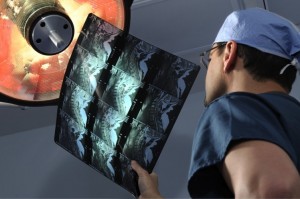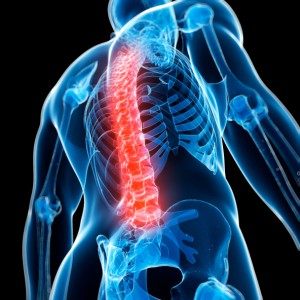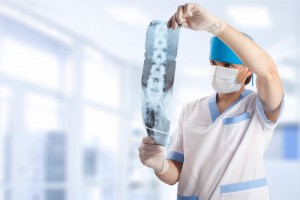 Debilitating spine conditions are often caused by poor mobility and behavioral movement patterns. When we put ourselves in compromised positions time over time, the spine starts to break down. This means that in the intervertebral discs can lose water content and weaken.
Debilitating spine conditions are often caused by poor mobility and behavioral movement patterns. When we put ourselves in compromised positions time over time, the spine starts to break down. This means that in the intervertebral discs can lose water content and weaken.
Poor spinal mechanics also affect the facet joints as they start to become arthritic while the ligaments calcify. The degenerative development causes the spinal cord, nerve roots, and spinal nerves to become cramped if it’s inflamed or misaligned thus invading the spinal canal. Let’s discuss about five of the most common spine conditions which requires spine surgery.
1. Ankylosing Spondylitis
The most frustrating aspect of having Ankylosing Spondylitis is feeling pain not because of exertion, but from doing the simplest things. Its most common symptom is experiencing back pain while the stiffness gets even worse when you try to rest. Ankylosing Spondylitis often feels worse during the morning which could be very stressful. The pain could also be felt in the hips, shoulders, neck and feet.
The main treatment used to treat Ankylosing Spondylitis is Transcutaneous Electrical Nerve Stimulation (TENS). It involves the process of passing an electric current within the skin. It’s similar to the concept of acupuncture. It brings out the release of the natural pain relievers in our body. In the worst cases of Ankylosing Spondylitis, spine surgery is the only method to cure it. Decompression, osteotomy, and spinal instrumentation are the most recommended procedures depending on the severity of the deformity.
2. Spinal Tumors 
Spinal Tumors often require a delicate and complex spinal tumor surgery. The main goal is to eliminate as much of the tumor as possible. It’s essential that the other important parts and surrounding structures of the spine will not be disturbed. Similar to all other surgeries, it always has the best results when done by a specialist who has years of experience in the field.
There are a few therapies which are commonly recommended to treat the tumor and relieve symptoms. One of them is corticosteroids which are drugs taken to decrease swelling when the spinal tumor presses against the spinal cord. Another therapy is surgery which is often performed when it cannot be removed by any other operation. In this instance, it’s highly suggested to consult an experienced expert like Doctor Joshua S. Rovner, M.D., a reputable spine surgeon in New Jersey who also practices in New York.
3. Lumbar Disc Herniation
People who have Lumbar Disc Herniation requires an individualized treatment for each patient. The options that will be provided by the doctor solely depends on the length of time wherein the patient first experienced the symptoms. This condition involves extreme back pain problems. Another thing which is considered is the nature of the symptoms when there is numbness.
Patients are usually advised to begin with 6-12 weeks of non-surgical treatment. This includes physical therapy, medications and epidural injections. If the patient still experiences severe pain after 12 weeks, it is when a surgery will be recommended (i.e. spinal fusion surgery, etc.)
4. Degenerative Disc Disease (DDD)
Having Degenerative Disc Disease often causes lower back pains specifically in young adults. The good thing about it is that even though it’s usually experienced in a longer period of time, it’s easily manageable. There two main treatments available to cure it. Passive treatment is done to the patient while active treatment is done by the patient.
Some examples of passive treatments are pain medication, chiropractic manipulation, epidural injections, ultrasound and massage. On the other hand, the most common active treatments are exercise, weight loss, ergonomics and quitting smoking. However, people who have ongoing severe and disabling pain will not be able to wait for the effects of the treatments to take place. This is when the doctor will advise the need to embrace spine surgery.
5. Spinal Stenosis
This condition is mainly experienced by the elderly, specifically those over 60 years old. It occurs when the spinal canal slims down to the extent wherein the spinal cord and nerve roots become compromised. The most common symptoms of weakness, pain and numbness is called Neurogenic Claudication. These are less severe than the symptoms of disc herniations. This is because it affects plenty of roots compared to only one root. In cases like these, it is recommended to consult an experienced New Jersey spine specialist.
When the person stands up or walks, the pain worsens because of the movement in the spinal canal. When sitting down, it relieves the pain by forming in a straight manner which stretches the ligament opening up the spinal canal. The most common treatments for this are exercises, activity modification, epidural injections and medication. However, in its most advanced complications, decompression surgery is required.